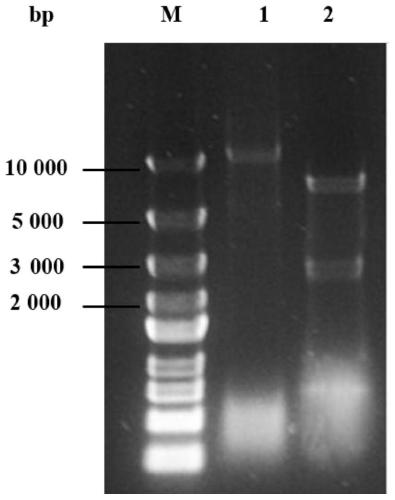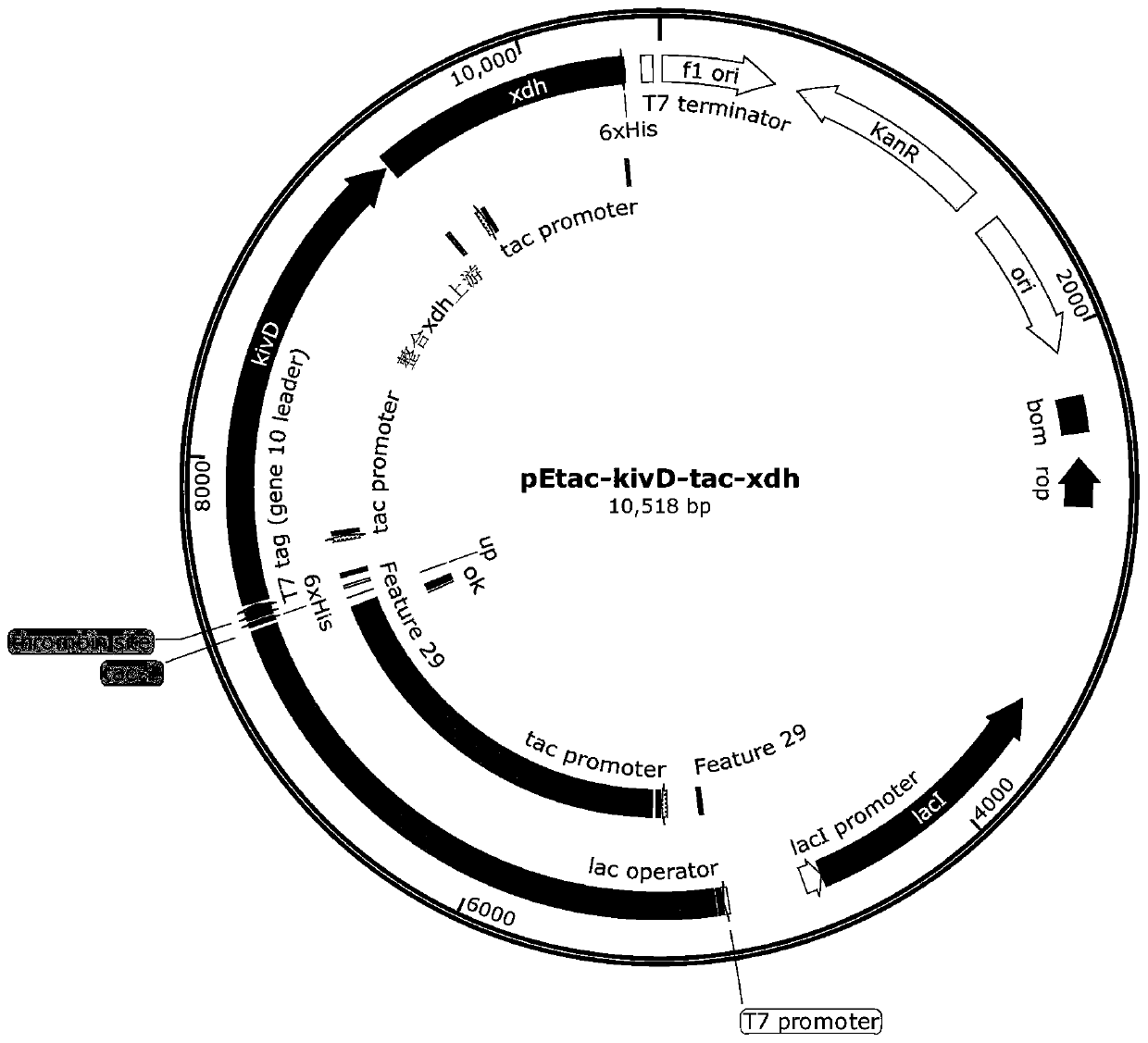Method for co-production of 1,3-propanediol and D-1,2,4-butanetriol
A technology of propylene glycol and Klebsiella, applied in botany equipment and methods, microorganism-based methods, biochemical equipment and methods, etc., can solve the problems of limiting xylose, high xylose price, and low conversion rate
- Summary
- Abstract
- Description
- Claims
- Application Information
AI Technical Summary
Problems solved by technology
Method used
Image
Examples
Embodiment 1
[0049] Embodiment 1: Construction of recombinant Klebsiella pneumoniae
[0050] Specific steps are as follows:
[0051] Synthesize the gene yjhG (SEQID No.6) encoding xylose dehydratase derived from Escherichia coli (Escherichia coli); combine the synthesized gene kivD encoding 2-ketoisovalerate decarboxylase with the recombinant plasmid pEtac-kivD-tac -xdh (recorded in the literature "Jing P Y, Cao X, Lu X Y, etc. Modification of an engineered Escherichia coli by a combined strategy of deleting branch pathway, fine-tuning xylose isomerase expression, and substituting decarboxylase to improve1,2,4-butanetriol production[J].Journal of Bioscience and Bioengineering, 2018,126(5):547-552.", the nucleotide sequence of the tac promoter is shown in SEQ ID No.7) by restriction endonuclease Xba I After digestion with Nco I, ligation was performed to obtain the ligation product; the ligation product was transformed into Escherichia coli (Escherichiacoli) BL21 to obtain the transformati...
Embodiment 2
[0052] Example 2: Coproduction of 1,3-propanediol and D-1,2,4-butanetriol
[0053] Specific steps are as follows:
[0054] With Klebsiella pneumoniae (Klebsiella Pneumoniae) JI22914 as a control, the single colony of recombinant Klebsiella pneumoniae JI22914 / pEtac-yjhG-tac-kivD-tac-xdh obtained in Example 1 was streak-inoculated on LB solid medium cultured at 37°C for 12-14 hours to form a single colony; pick a single colony and inoculate it into LB liquid medium, cultivate it at 37°C and 100rpm for 12 hours to obtain a first-class seed liquid; inoculate according to 1% (v / v) Transfer the primary seed solution to the new LB liquid medium, cultivate it for 8h at 37°C and 100rpm to obtain the secondary seed solution; transfer the secondary seed solution to the In the fermentation medium, shake culture at 37° C. and 150 rpm for 48 hours to obtain a fermentation broth.
PUM
 Login to View More
Login to View More Abstract
Description
Claims
Application Information
 Login to View More
Login to View More - R&D
- Intellectual Property
- Life Sciences
- Materials
- Tech Scout
- Unparalleled Data Quality
- Higher Quality Content
- 60% Fewer Hallucinations
Browse by: Latest US Patents, China's latest patents, Technical Efficacy Thesaurus, Application Domain, Technology Topic, Popular Technical Reports.
© 2025 PatSnap. All rights reserved.Legal|Privacy policy|Modern Slavery Act Transparency Statement|Sitemap|About US| Contact US: help@patsnap.com



